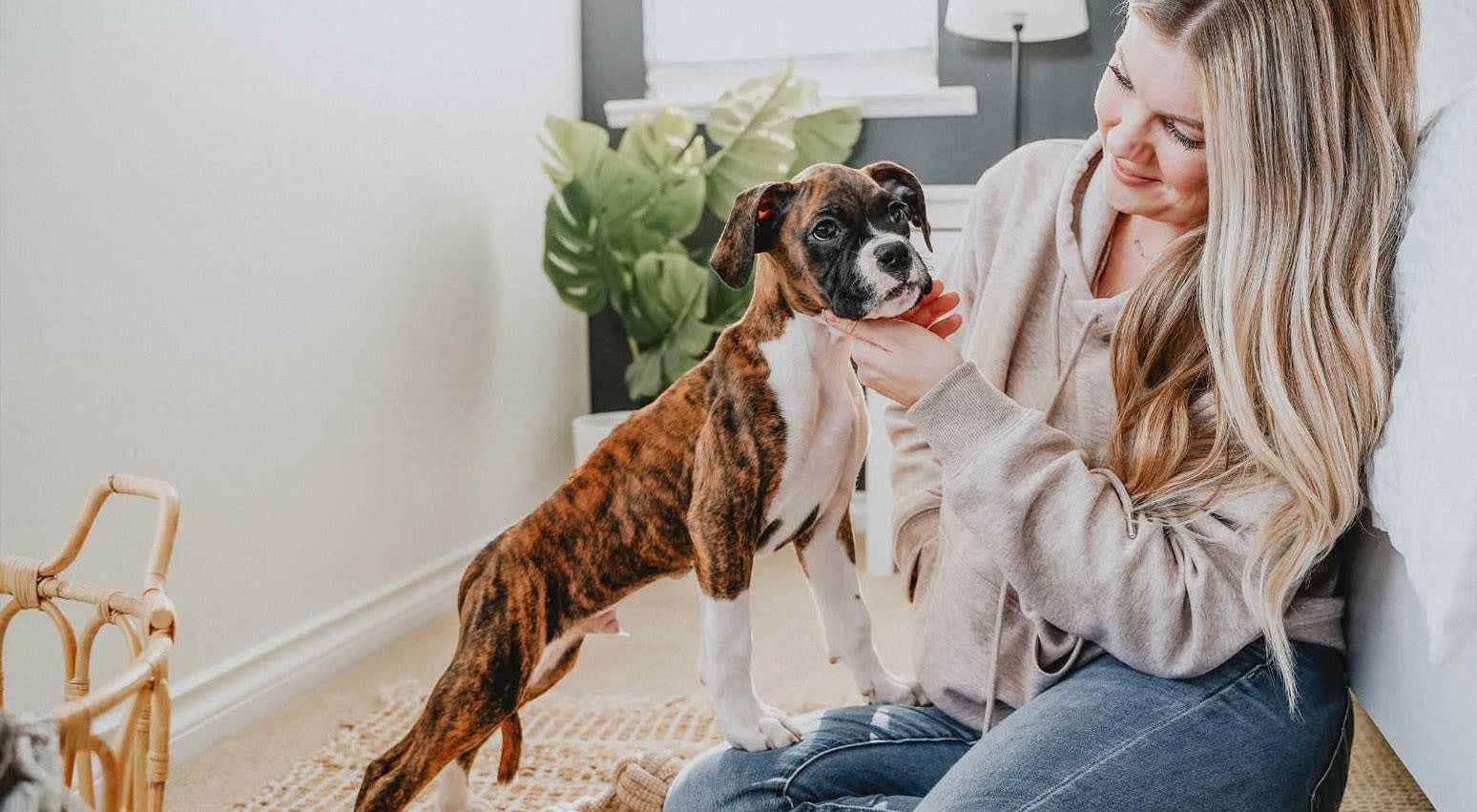Responsible pet parents understand living with a new puppy is like living with a toddler. So, pet parents need to spend time teaching that puppy to be a good member of the family. One way to do that is to reward good behaviors (ex. not peeing in the house) and redirect bad behaviors ex. (offering a chew toy instead of your favorite pair of shoes).
Before you Begin Puppy Training
It can be overwhelming to decide the best things to teach your foufoupuppies. One of the best ways to interact with your dog and to get him or her to pay attention to you is to teach look or watch me command. This isn’t necessarily a trick, rather it’s a way to capture your dog’s full attention before you begin training. To do this, simply decide which words you will use and be consistent. Before you begin teaching your dog anything else, say “look,” and offer a treat when she responds. When you have her full attention, move on to the training.
Basic Puppy Commands
Teach your dog to Sit. This is a basic, and easy to teach, command. Starting out with something easy gives a positive boost to the training session for both the dog and for you. To teach sit, hold a treat by your dog’s nose. Lift your hand and the treat until his head follows your hand. This will naturally cause his butt to lower to the ground in a sitting position. After he’s sitting, say the word “sit,” and give him a treat and praise.
Repetition is key to mastering any command. Practice sitting several times a day. Use the command to get him to sit before you put his food dish in front of him, or when you’re taking a walk and come to an intersection.
Tip: If you’re trying to teach your dog other commands he isn’t mastering, ends the session before you both get frustrated, but end on a good note. If he has mastered sit, then have him do that—offer treats and praise, then playtime.
Teach your dog to Come. This command could literally be a life-saver. Teaching your dog to come when you call, first time, every time is a necessary command—especially if he slips out of his leash or out the door without his leash.
Teach your dog this command in the house by having someone hold him in one room, while you either go to the end of the room or another room entirely. Call him, with the come command. Infuse enthusiasm into your voice and reward your dog with a treat and praise when he comes on command. If, every time he comes to you, you are ecstatic to see him—petting and making a fuss over him—he will have no reason not to come when called.
Practice this command when you’re in a safe area where there are distractions. You will know he’s mastered the command when he comes to you, without hesitation, regardless of what’s going on around him.
Teach your dog to Give It or Drop It. This command is necessary in case you need your dog to drop something she’s picked up off the floor that she shouldn’t eat or if you want her to give you a toy, piece of food, or your shoe that she’s chewing.
Leave it is a variation on giving it. You can use the same idea (drop, give, or leave) as long as you use the same command so your dog doesn’t get confused. Know what action you’d like your dog to perform, then reward her for having done it.
For example, if you want your dog to give you a toy, give the give it or drop it command and hold out your hand. You may want to give a little tug on the toy and say the command again. Once she opens her mouth and gives it to you, reward and praise her.
You may consider the leave it command a separate one, and if that’s the case, drop an item on the floor and say the command. If your dog doesn’t pick it up, you can reward her with a treat and/or praise. Leave it is a command that therapy dogs learn, so they don’t pick up dropped medication if they are in a hospital or nursing home setting.

